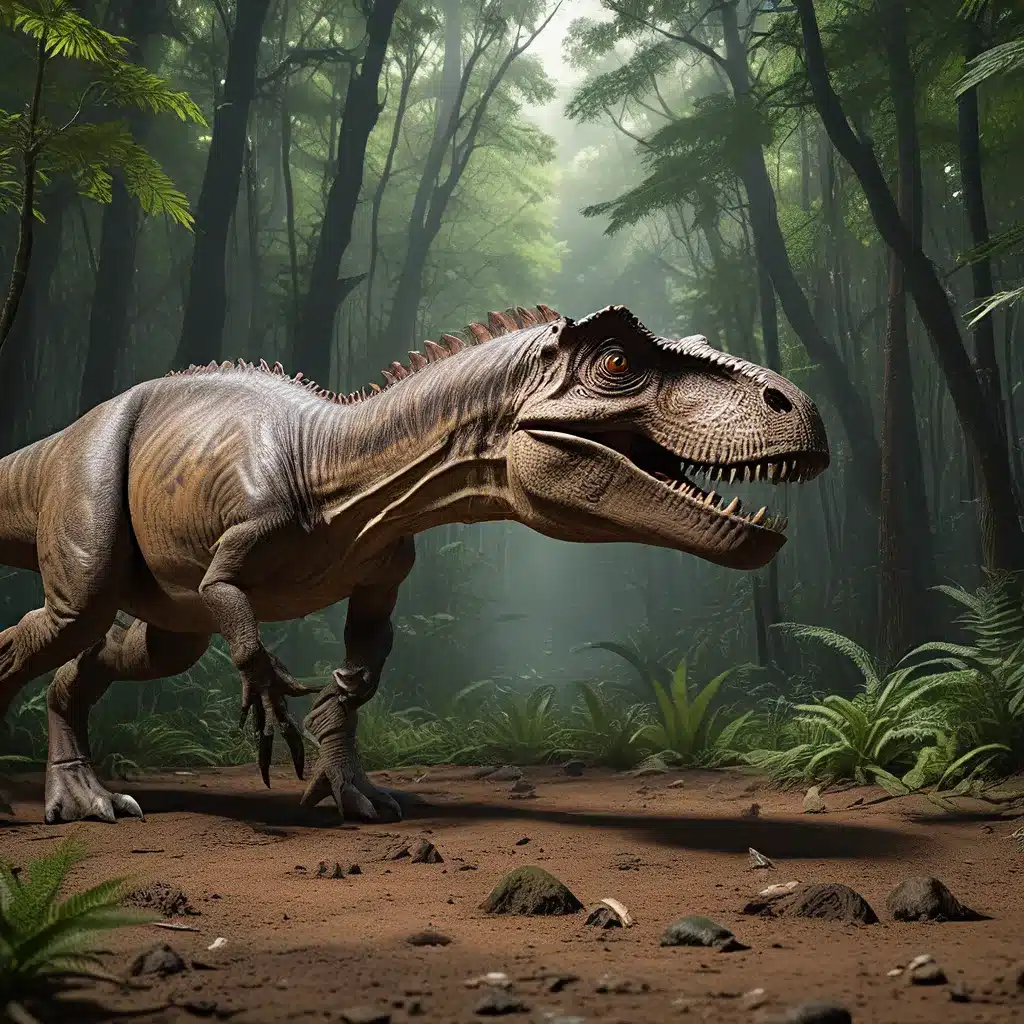
In the vast and mysterious realm of ancient life, the dinosaurs have long captivated the imagination of scholars, adventurers, and the general public alike. From the towering Tyrannosaurus Rex to the gentle hadrosaurs, these incredible creatures have left an indelible mark on our understanding of the past. But as our knowledge of dinosaurs continues to evolve, a new frontier has emerged: the discovery of polar dinosaurs – species that thrived in the frigid climates of the ancient world.
A Surprising Revelation: Dinosaurs in the Arctic
For decades, the prevailing view of dinosaurs was that they were predominantly tropical creatures, confined to the lush forests and swamps of the past. However, a remarkable series of discoveries in the Alaskan Arctic has challenged this long-held assumption. In the remote reaches of the Colville River, a treasure trove of dinosaur fossils has been unearthed, revealing a world that was once far colder than we could have imagined.
The story begins in 1961, when Robert Liscomb, an oil company geologist, stumbled upon a handful of bones while mapping the banks of the Colville River. Initially, Liscomb believed these to be the remains of mammals, but they would soon be recognized as a groundbreaking discovery – the first evidence of Arctic dinosaurs. For nearly two decades, these bones languished in a drawer, their significance unappreciated.
It was not until the mid-1980s that the scientific community began to take notice of the Colville River fossils. As dinosaur footprints and skin impressions were uncovered in other northerly locations, such as the Norwegian island of Svalbard, the old bones were retrieved and reexamined. To the astonishment of paleontologists, they belonged to a diverse array of dinosaur species, including the Edmontosaurus, a Triceratops-like relative, and even a tyrannosaur the size of a walrus.
Adapting to the Harshest Environments
The discovery of these polar dinosaurs challenged long-held assumptions and sparked fierce debates among experts. How could these cold-blooded animals have survived in such an unforgiving environment? The initial theory was that they must have simply migrated to the poles during the summer months, much like the modern-day Arctic terns, and then retreated to warmer climates when winter arrived.
However, this explanation soon began to unravel as further evidence emerged. In 2014, a remarkable find in the Alaskan nature reserve revealed a mega-herd of hadrosaurs that had crossed a muddy floodplain in the Late Cretaceous, when temperatures dipped to near-freezing levels. The presence of young dinosaurs among the herd suggested that these animals were year-round residents of the Arctic, not just seasonal visitors.
This revelation forced scientists to rethink their understanding of how these remarkable creatures adapted to their harsh environment. One possibility is that some species, such as the Thescelosaurus, a relative of the Colville River dinosaurs, may have been capable of hibernation – a strategy employed by many modern-day Arctic mammals to conserve energy and survive the long, dark winters.
Another intriguing theory is that the polar dinosaurs may have built up substantial fat reserves during the summer months, much like their modern-day counterparts, the moose and caribou. This would have provided them with a crucial source of insulation and sustenance during the harsh winter months when food was scarce.
Unraveling the Mysteries of Dinosaur Physiology
As scientists delve deeper into the world of polar dinosaurs, they are also shedding new light on a longstanding debate: were these ancient creatures warm-blooded or cold-blooded? The discovery of the Alaskan fossils has provided invaluable clues to help answer this question.
One of the most striking observations is the absence of any reptilian remains, such as crocodiles or lizards, in the Colville River fossil beds. This suggests that the Arctic dinosaurs were likely more closely related to modern birds and mammals in their ability to regulate their body temperature.
Further evidence comes from the dinosaurs’ growth patterns, as revealed by the study of their bone cross-sections. The presence of distinct growth rings, similar to those found in tree trunks, indicates that some species may have undergone periods of hibernation or reduced activity during the harsh winter months. This points to a level of endothermy, or the ability to generate internal heat, that would have been crucial for survival in the frigid Arctic.
Revealing the Resilience of Dinosaurs
The study of polar dinosaurs has not only challenged our understanding of these ancient creatures but has also shed light on their remarkable resilience and adaptability. While the extinction of the dinosaurs remains a topic of intense debate, the discovery of these cold-weather-adapted species suggests that they were far more diverse and capable of thriving in a wide range of environments than previously thought.
As Druckenmiller, a paleontologist at the University of Alaska, explains, the smallest feathered maniraptoran dinosaurs, the ancestors of modern birds, were able to adapt and survive the global cooling that ultimately led to the demise of their larger counterparts. This underscores the importance of examining the full breadth of the dinosaur kingdom, from the towering Tyrannosaurus to the unassuming Thescelosaurus, to gain a more complete understanding of their evolutionary journey.
The ongoing exploration of the Colville River and other polar dinosaur sites continues to yield fascinating insights, shedding new light on the remarkable adaptations and behaviors of these ancient creatures. As we delve deeper into the mysteries of the dinosaur world, we are not only uncovering the secrets of the past but also gaining a deeper appreciation for the resilience and diversity of life on our planet.
To explore more about the fascinating world of dinosaurs and the latest archaeological discoveries, visit The Lost Kingdoms, a website dedicated to sharing the captivating stories of ancient civilizations and the artifacts that reveal their secrets.


